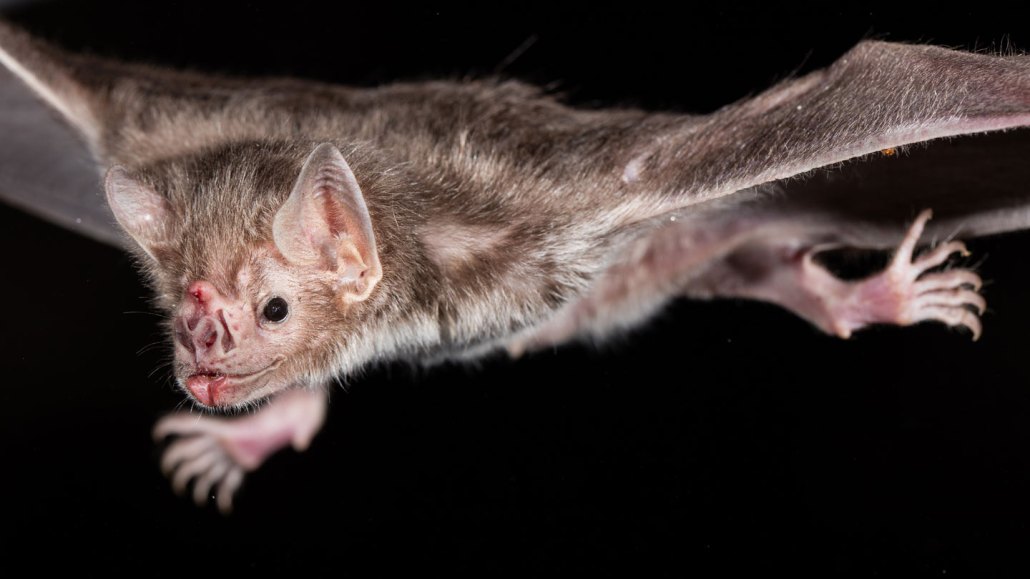Let’s learn about vampire bats
These creatures of the night are the only mammals that feed on blood alone

Common vampire bats, like this one, use echolocation to hunt their prey — such as sleeping cows and horses — in the dark of night.
Nicolas Reusens/Getty Images
Share this:
- Share via email (Opens in new window) Email
- Click to share on Facebook (Opens in new window) Facebook
- Click to share on X (Opens in new window) X
- Click to share on Pinterest (Opens in new window) Pinterest
- Click to share on Reddit (Opens in new window) Reddit
- Share to Google Classroom (Opens in new window) Google Classroom
- Click to print (Opens in new window) Print
Despite their fearsome name, vampire bats are kind of adorable.
These fuzzy flyers include three species of bats that live in Mexico, Central and South America. Two are the hairy-legged vampire bat and the white-winged vampire bat. But the most abundant and well-known species is the common vampire bat (Desmodus rotundus).
Just a few inches long, common vampire bats spend their days hanging upside-down from creepy locations, such as the roofs of caves, hollow trees and empty buildings. They navigate through the darkest of nights with echolocation.
These critters often feed from sleeping cows, horses and other farm animals — but usually not humans. (The other two species of blood-drinking bats feed on birds and other forest animals.) When a vampire bat lands on its prey, it makes a small cut with its teeth and laps up the blood that spills out. This feeding is so stealthy that a bat can drink blood for half an hour without waking its prey. The bats don’t take enough blood to harm their hosts — though their bites can spread diseases such as rabies.
Common vampire bats live in groups of hundreds to thousands. Bats that live together are known to groom each other and even team up for hunting. When one bat can’t find food, another may even spit up some blood to feed its hungry neighbor.
So while vampire bats may literally be bloodthirsty, they can be surprisingly gentle with both their prey and each other.
Want to know more? We’ve got some stories to get you started:
Losing some genes may explain how vampire bats can live on blood Loss of 13 genes active in other bats could support the vampires’ blood-eating strategies and adaptations. (4/28/2022) Readability: 6.6
Sucking blood isn’t an easy life, even for vampires Real vampires include bats, insects and even birds. And they’ve had to develop novel ways of dealing with a diet of blood. (10/26/2017) Readability: 7.4
Bloodthirsty vampire bats prefer drinking with friends Vampire bats were known to bond with others in their roost. Now, research suggests bonded bats often drink blood from animals together. (10/29/2021) Readability: 6.4
Explore more
Scientists Say: Nocturnal and diurnal
Let’s learn about the creatures of Halloween
Vampires’ gift of ‘blood honey’
Here’s what bats ‘see’ when they explore the world with sound
The secrets of super-slurper bat tongues
New treatment offers hope for bats battling white nose syndrome
Activities
Want to see and hear bats firsthand without leaving the house? Bat Conservation International has links to livecams and videos, as well as an interactive map that allows you to hear bat calls from around the world.







